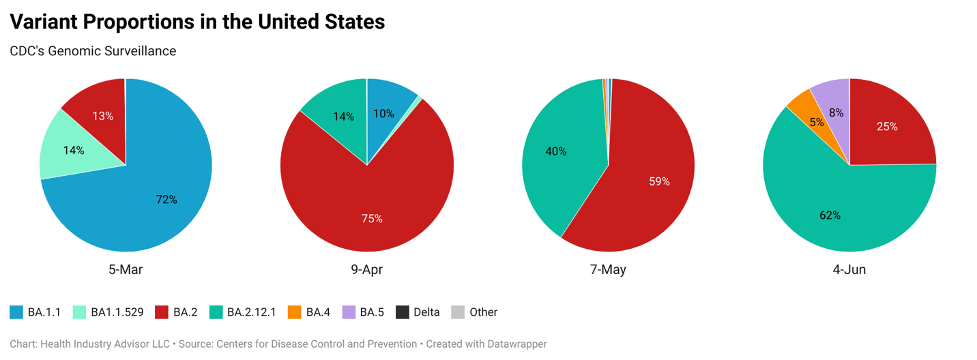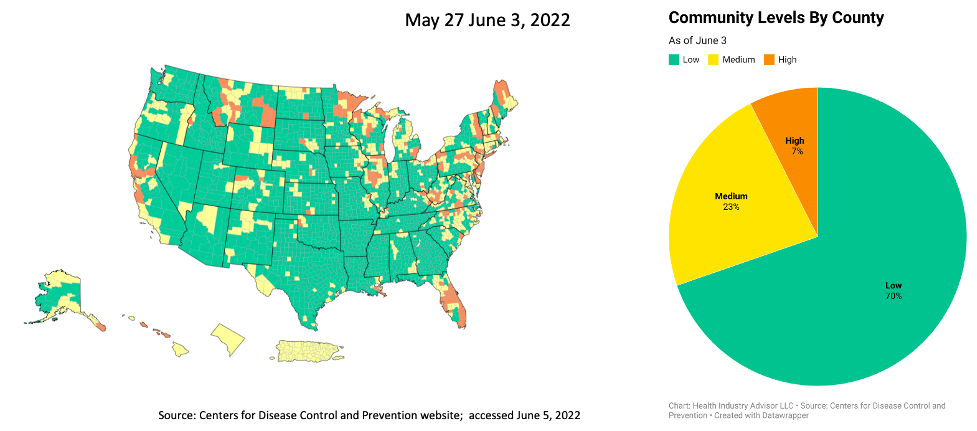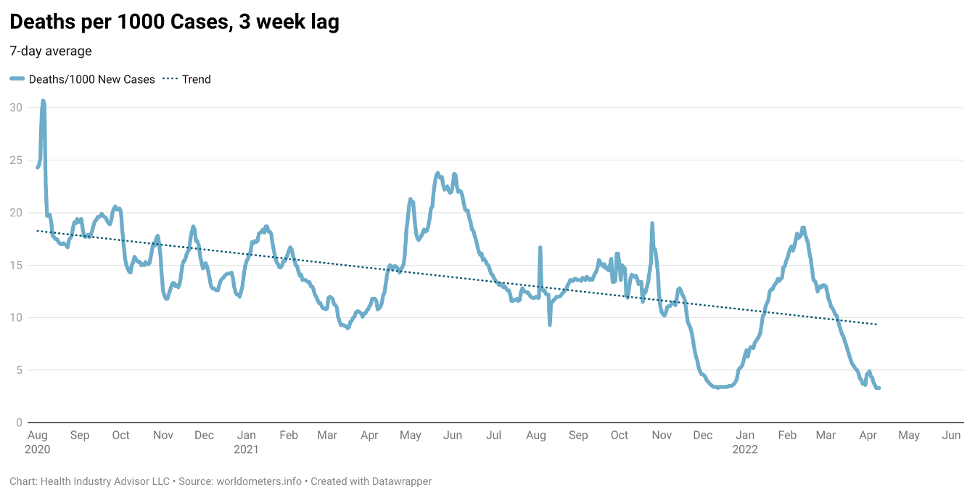By Mark Van Sumeren
June 8, 2022 – In the second quarter of both 2020 and 2021, we welcomed a respite in the relentless barrage of new Covid cases. Daily infection rates bottomed out in the United States, ostensibly tied to the seasonal nature of Covid infections. These lulls preceded significant infection spikes in the Fall/Winter seasons when we suffered our highest infection rates each year.
Our experience this year has disrupted this seasonal pattern. Infection rates rose throughout May and into June, defying the declines we enjoyed the previous years. A succession of Omicron variants has dogged the United States since the beginning of the year, driving this unseasonal pattern.

Omicron BA.1 dominated the January to March timeframe. Infection rates swelled, with 750,000 to 1 million new cases diagnosed each day at their peak. Fortunately, this wave receded as quickly as it grew. By March, this lineage had run its course. Indeed, if the past were prologue, relatively few American should have been afflicted in the following months.
However, successive mutations of the Omicron variant have emerged, each gaining Variant of Concern (VOC) designation from the CDC. First, BA.2 gained dominance in April and into May, followed by BA.2.12.1, which is now the dominant strain. BA.4 and BA.5 have emerged in recent weeks.
The Omicron variants have proven particularly adept at evading the protection provided via vaccination. A year ago, fully vaccinated persons had a 10 to 14 times lower risk of testing positive than unvaccinated persons. With Omicron circulating, this risk is now only two times lower. (Vaccines remain highly effective at reducing severe outcomes under Omicron: 70% lower risk of hospitalization; 90% lower risk of requiring mechanical ventilation; and 94% lower risk of death.)
Fortunately, our hospitalization experience with these latter Omicron variants has proven less intense than with BA.1 and earlier variants. Indeed, both Covid hospital admissions and patient days have increased since mid-April – more than doubling. However, both rates remain relatively low by pandemic-to-date experience.
Consider:
- The seven-day average of new Covid cases as of Friday exceeded the rate reported 70% of the time since August 2020.
- Nevertheless, Covid hospitalizations fell lower than hospitalizations recorded for 70% of this time.
The CDC continues to reflect these low hospitalizations in its Community Level scorecard. The latest scorecard, which measures the virus’s impact on our communities and the need for preventive measures, rates seven of every ten counties as Low for virus impact. The number of counties the CDC rated as High fell the past two weeks.

The most encouraging news deals with the case fatality rate from recent Covid cases. This rate has fallen steadily since August 2020, reflecting some combination of better detection and treatment, the benefit of increased antibodies from vaccinations and prior infections, and lessened variant severity. The current case fatality rate has reached a pandemic-low level of with three deaths for every 1,000 new cases.

We should be enjoying a seasonal infection lull at this point, with a wary eye on the potential for more infections in the Fall and Winter. However, the seemingly unending layer upon layer of Omicron variants warrants greater diligence. Still, the lessened severity and improved outcomes offer encouragement.
